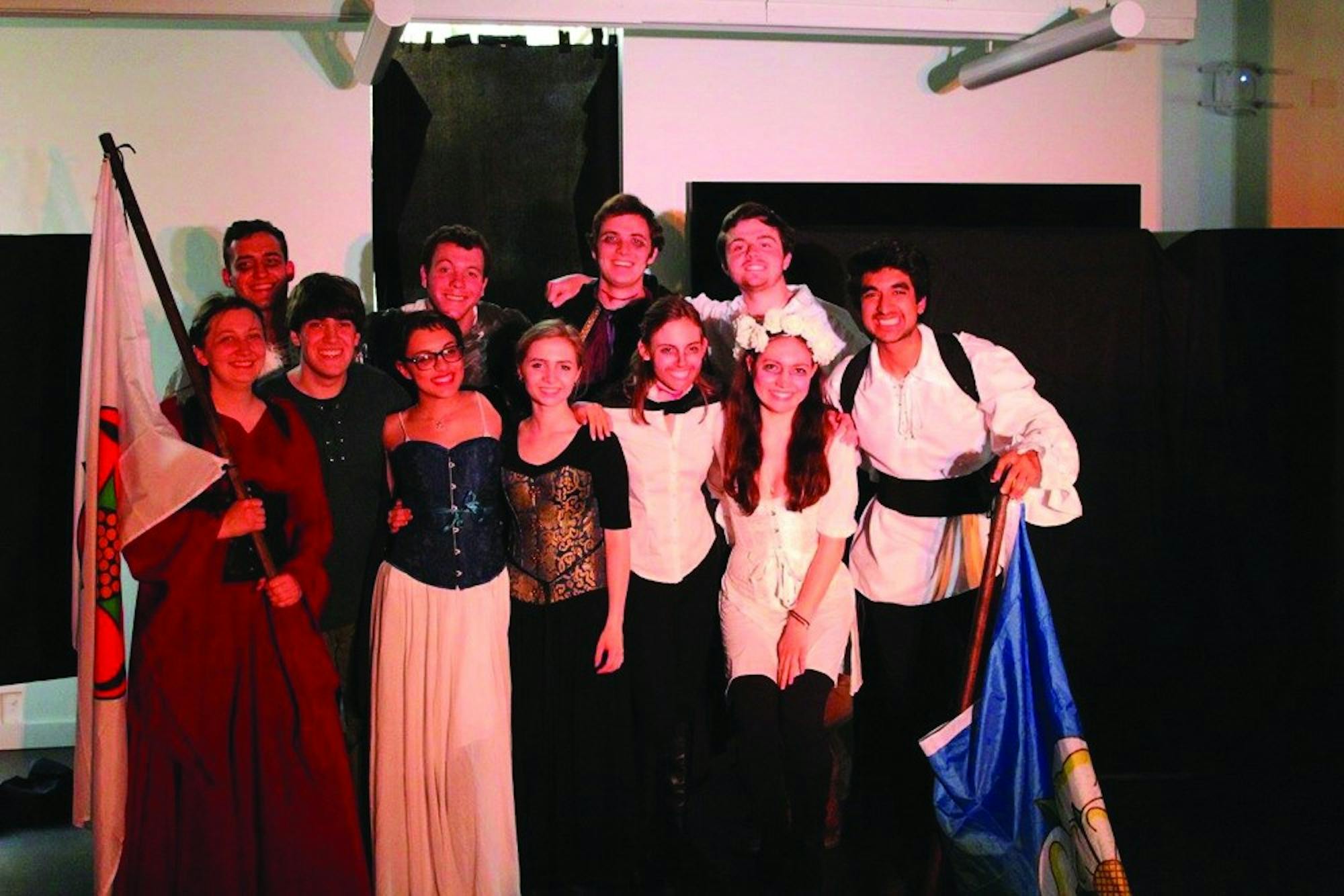Nestled in between the parties hosted on Webster Avenue and the first-year family activities hosted by the College, the Dartmouth Rude Mechanicals performed an abridged conception of “Richard III” to an audience comprised of students and curious visiting parents in House Center B.
The choice of tragedy presents an immediate challenge to an 11-member performance group: How to appropriately cast the show so that all of the central characters can be represented in the clearest light, without over-simplifying the plot. This production chose to emphasize eye-catching, distinctive pieces of costuming to distinguish the members double-cast. The pieces that were intentionally distinctive, like the red cloak of the queen and the purple shirt worn by the Duke of Buckingham, were beautiful and successfully brought life and color to an otherwise bare set. Annie Furman ’19 designed and created many of the garments, which evoked the era but did not attempt a full imitation. Some actors dressed in full period pieces while others paired pieces with contemporary clothes. Unfortunately, due to the reliance on double casting, costume changes were limited and not always effective in conveying a change in character. A family chart included in the program may have helped some follow along, but without the aid, one might simply abandon the urge to keep track of everyone and focus on the action.
The production incorporated fight scenes, mixing real weapons with prop stand-ins to further the eclectic presentation. The actors skillfully managed the spacial limitations to provide exciting bursts of action that were sorely needed in a play filled with promises made and broken, stratagems discussed and deals brokered — in other words, it was wordy.
Sid Mehra ’18 held the iconic title role, forgoing the traditional humpback and withered arm and instead adopting a stoop, a stagger and a sneer. At times, the tiny performance space felt overwhelmed by the sheer amount of characters present, and key players were lost in the crowd. However, Mehra shined in asides and monologues directed to the audience with a conspiratorial stage whisper, even with his company beside him.
Caroline Hattier ’18 and Laura Calderón ’19 both portrayed mothers of murdered sons, the Dutchess of York and Queen Elizabeth, respectively. The two approached the task differently, but both succeeded in portraying tear-filled reactions to the deaths of their loved ones. Calderon’s Elizabeth, distraught and yearning to strike back with a curse, finds her words failing her at a crucial confrontation. In contrast, Hattier, as Richard’s mother, rises to condemn her son with convincing venom.
Another high point of the performance came from Furman, who in her turn as Queen Margaret, the widow of King Henry VI, spanned from powerful, violent leader to usurped, mourning woman to foreboding, ominous narrator.
The performance ran about an hour and a half long with no intermission. Naturally, such a run time meant that not every word of Shakespeare’s text survived abridgment. Certain plot points suffered under the acceleration, like the details of Richard’s marriages and nature of the illness that killed Edward of Westminster and Lady Anne Neville. Altogether, however, the play retained the most recognizable and powerful speeches and the most important aspects of the plot, and a viewer more familiar with the original work might more easily fill in the gaps.
Housing Center B offered most of its first floor to the Rude Mechanicals’ production, but between the backstage area and the audience seating, little room was left for the actual stage. A simple backdrop of curtains served as scenery, with one central window blacked out with fabric. Props were sparingly used, and the sole adornment to the set was a hefty throne that arrived occasionally, always in the arms of an actor. Overall, the fully student-run group performed without relying on traditional staging conventions. Whether by choice or by necessity, it was a testament to the quality of the complete collective that the actors were able to not only keep the focus of the audience but also transport them to an alternate world.




